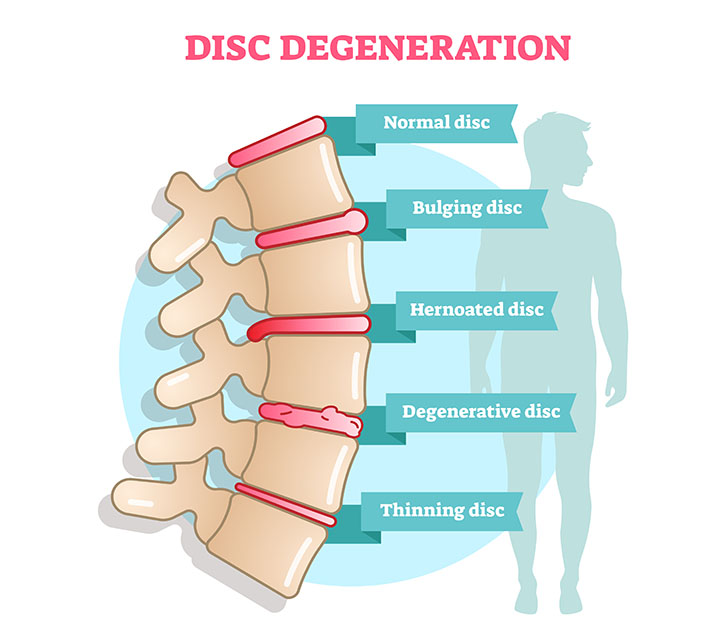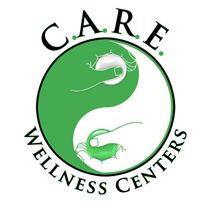By Dr. Adam J. Friedman – Margate / Coconut Creek, Florida – Back Pain Caused by Degenerative Disc Disease
Many of my patients come to me fully armed with information about degenerative disc disease; somehow, the word “degenerative” makes them tune out much – if not all – what they are told or what they have read. Many are filled with stories from neighbors and friends; most of these stories are too general or too specific. What is true for one person is not necessarily true for another, or for you.
Nowhere is this more obvious to me than the number of people who come to see me regarding their back pain due to this condition. Because the time I spend with them reveals a noticeable lessening of their anxiety and stress – not to mention the calming effects of a true and open discussion on non-surgical treatments – I thought I would share this information with you.
It is important that you understand that “degenerative disc disease” is not actually a disease, rather it is a condition in which a damaged disc causes pain. Let’s remember one simple truth: everyone has a body that slowly deteriorates as we age. As babies, the discs in our spines are mostly water. As we age, they lose water and get thinner.
In a young and healthy back, the discs between the vertebrae provide height and allow for bending and twisting. Your discs are like shock absorbers between the bones in your spine. They are designed to stay flexible while resisting outside forces.
As one ages, discs can show signs of wear and tear and begin to break down. Nearly everyone’s discs break down over time, but not everyone feels pain. Unlike other tissues of the body, there is very little blood supply to the disc, so once a disc is injured, it cannot repair itself, and the discs can start to deteriorate.
In addition to the simple act of aging, daily activities and sports can cause tears in the outer core of the disc and injuries – such as a fall – can cause swelling, soreness, and instability.
Degenerative Disc Disease Symptoms
Symptoms are most commonly concentrated in the low back or neck, depending on where the degenerated disc(s) are. Common symptoms include:
- Pain that ranges from nagging to severe and disabling
- Pain that affects the low back, buttocks and thighs
- Pain in the neck that may radiate to the arms and hands
- Pain that is worse when sitting
- Pain that gets worse when bending, lifting or twisting
- Pain that lessens when walking and moving
- Pain that lessens with changing positions often or lying down
- Periods of severe pain that come and go, lasting from a few days to a few months
- Numbness and tingling in the extremities
- Weakness in the leg muscles or foot drop may be a sign that there is damage to the nerve root
Of course, degenerative disc disease – or any illness for that matter – should never be decided upon by yourself assisted by an online review or article. Your diagnosis should be based upon a comprehensive spinal examination including a full description of your symptoms; it is imperative that you are honest with your doctor about the circumstances of when and where the pain started.

Degenerative Disc Disease Treatment with Chiropractic
The goal of chiropractic care is to improve joint mechanics by improving spinal motion and reducing inflammation. I may also work on improving the function of your intervertebral discs – but that is only if you do not have advanced disc degeneration.
In our first consultation, I will review your past and present medical history, which includes the type and dosages of medications you are currently taking and discuss your current symptoms and the potential causes. I’ll also check on what medications you discontinued within the past year.
A physical and neurological examination helps to pinpoint potential problem areas, such as where a joint motion is restricted, abnormal spinal curvature, muscle spasms, or evidence of an injury – so if you have x-rays or notes from another doctor – bring them with you. There are many different reasons why your neck or back may hurt, so the more I know, the more accurate my care can be.
To help treat your degenerative disc disease symptoms, I may use a spinal manipulation, also known as a spinal adjustment. There are multiple types of adjustments, including:
- Specific spinal manipulation: This is where I will identify the joints that are restricted or those that show abnormal motion. I will work to restore movement to the joints using a gentle thrusting technique.
- Flexion-distraction technique: This type of spinal manipulation uses a gentle, non-thrusting technique; it’s typically used to treat herniated discs and spinal stenosis.
- Instrument-assisted manipulation: This technique uses a hand-held instrument. I apply gentle force without thrusting directly into the spine.
Beyond adjustments, chiropractors use a variety of manual therapy techniques, which include, but are not limited to, trigger point therapy, manual joint stretching and resistance techniques, and therapeutic massage.
In addition to spinal manipulation and manual therapy techniques, there are other ways to reduce your inflammation, thereby lessening your pain. These include “interferential electrical stimulation” – where a low frequency electrical current is used to stimulate muscles to reduce inflammation and “ultrasound”, which send sound waves deep into your muscle tissues. This creates a gentle heat which enhances circulation thereby lessening pain.
Chiropractic is Holistic Oriented
It’s important that you remember that a chiropractor is trained to “treat the entire person”, not just the individual symptoms. Controlling your degenerative disc disease back pain may require changes in your nutrition, how you manage your stress and/or changing/modifying lifestyle goals in addition to treating your degenerative disc symptoms.
All doctors – whatever their training – agree that getting their back pain under control – no matter what the source – requires exercise to increase both the strength and flexibility of muscles that surround and support the spine. Exercising increases the blood flow to the back which nourishes joints and muscles with oxygen and nutrients.
Additionally, exercise clears away destructive inflammatory waste products from the muscles. If you know that you have a family tendency toward degenerative disc disease, it may benefit you to invest in physical therapy or a personal trainer knowledgeable about back pain to be sure you are exercising correctly to keep your spine healthy.
Many exercises can be done with and without exercise equipment. Once you learn specific, back-targeted exercises, and once you are able to differentiate between the pain of an injury and the pain involved in muscle strengthening, in the long run, your back will thank you.
Along with regular chiropractic treatments, the proper amount of physical activity and strengthening the muscles which support your spine, there are other self-care choices you can make. Individuals have the responsibility of making healthy lifestyle choices, such as eating a nutritious diet, stopping smoking and abusing alcohol, as well as addressing both the physical and emotional effects of having a musculoskeletal condition.
We live in a time where health information is readily available; take advantage of it. It’s important that you learn all you can about degenerative disc disease and my proposed treatment. If anything is unclear – please ask. Prevention is much preferred over treatment. Self-management encompasses the choices made every day to live well and stay healthy – as well as pain-free!
Remember – each year, millions of people find relief from pain caused by their degenerative disc disorder – WITHOUT surgery, WITHOUT drugs – using chiropractic medicine and informed self-care. It may well provide you with relief as well.
Call me to schedule an appointment today!
Yours in health,
Dr. Adam
Additional Resources:
